| SOUTHEASTERN CARIBBEAN BIRDS PHOTO GALLERY |
| Trinidad and Tobago Field Naturalists' Club Southeastern Caribbean Bird Alert Trinidad and Tobago Rare Bird Committee |
| IDENTIFICATION ESSAY |
| Least Tern (Sterna antillarum) and Yellow-billed Tern (S. superciliaris): page 2 of 2 |
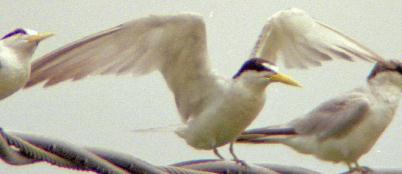 |
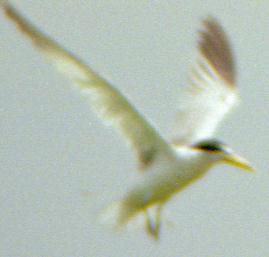 |
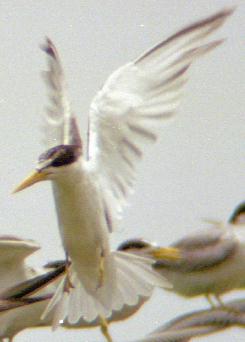 |
| PHOTO INDEX Perched (page 1) Flight (page 2) |
| Fig. 10. Alternate adult Yellow-billed Tern in flight at Trincity, Trinidad, 4 May 2002. Note the extensive dark wedge of the outer wing formed by four dark primaries, which is more extensive than in Least Tern. In basic plumaged individuals additional primaries become more worn and dark in both species. Photo © by Floyd Hayes. |
| Fig. 12. Yellow-billed Tern in flight at Trincity, Trinidad, 4 May 2002. Note the pale underwings of this bird in contrast with the darker outer primaries of the upperwing in Fig. 7. Note the short, shallowly forked tail. This individual appears to be moulting into basic plumage, with moulting inner primaries and secondaries and outer rectrices. Photo © by Floyd Hayes. |
| Fig. 13. Alternate plumaged Yellow-billed Tern at Trincity, Trinidad, 22 September 2001. Again note the white underwing of uplifted wings. Photo © by Floyd Hayes. |
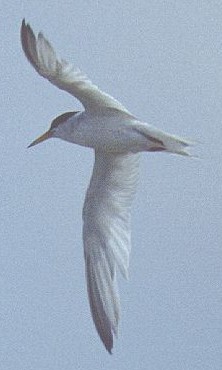 |
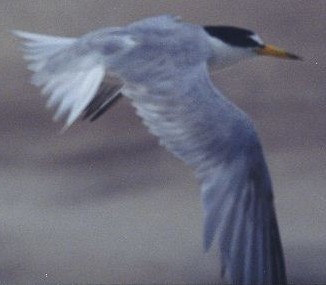 |
| Fig. 9. Alernate adult Least Tern along central Texas coast, early July 1999. Note the dark wedge in the outer wing (unfortunately cut off) formed by two dark primaries. In typical Least Terns only two outermost primaries are dark, but some individuals have three. In most Yellow-billed Terns the outermost three primaries are dark, but in some individuals two or four may be dark. The spread tail in this bird does not appear to be forked, but compare with the folded tail in Fig. 11 below. Photo © by Martin Reid. |
| Fig. 11. Alternate adult Least Tern (below) in flight along central Texas coast, early July 1999. Note the dark two outermost primaries (P6 is moulting) which appear paler from below than above. The tail appears more deeply forked tail than in most Yellow-billed Terns. Photo © by Martin Reid. |